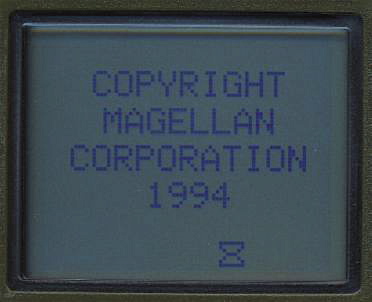
Startup screen
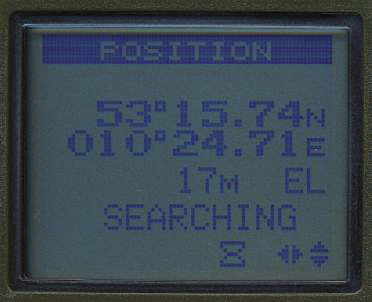
Satellite search
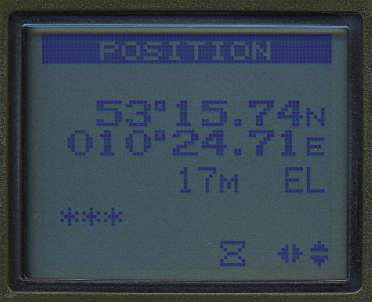
Satellite progress
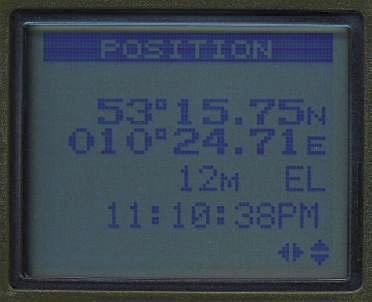
Position screen
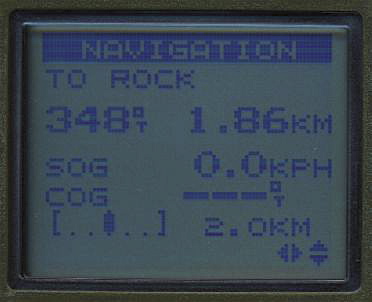
Navigation screen 1
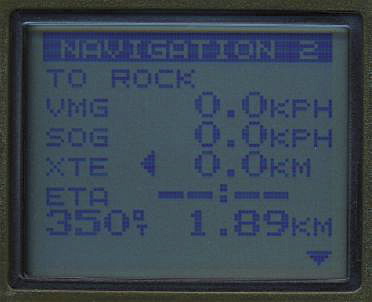
Navigation screen 2
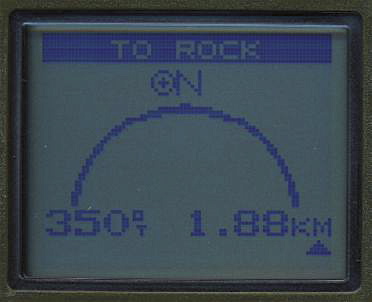
Pointer screen
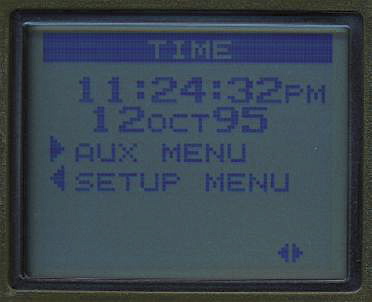
Time display
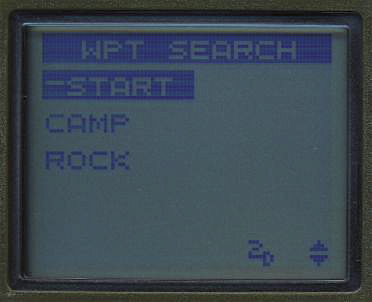
Waypoint search
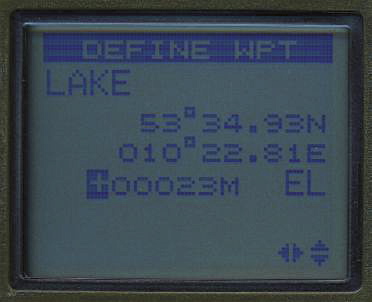
Define waypoint
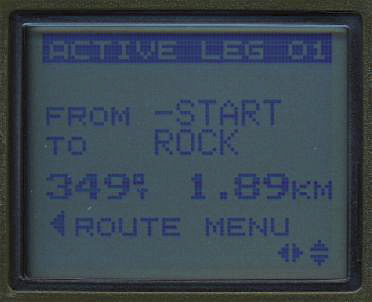
Active leg
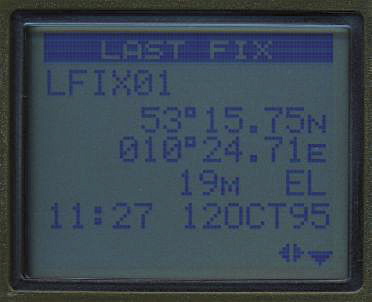
Last fix
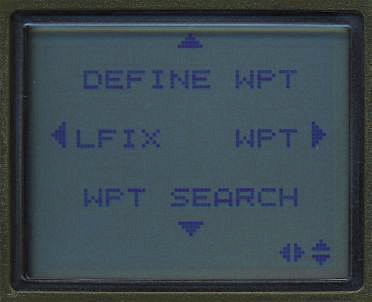
Help screen waypoint
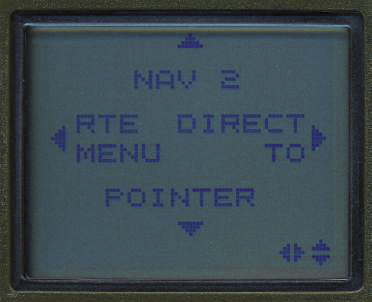
Help screen navigation
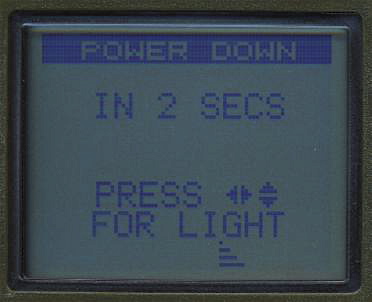
Power down
The Magellan Trailblazer was introduced in 1993. The earlier NAV 1000 and NAV 5000 units were meant for the marine market. Now Magellan followed a new concept, "Easy GPS for everyone!". So they put basic functions and a simple user interface in a smaller package. Two versions were available, the green Trailblazer and the white Meridian. They were promoted as a land and a marine GPS, the technical specifications and the firmware are just the same. The first versions of 1993 had a removable battery pack that could only be opened by "soft violence". Then the design was changed to an integrated battery holder with cover.
The units could store 100 waypoints and a route with 15 legs. 12 map datums could be chosen. For navigation there are two data screens and a pointer screen. The unit is quite easy to use. Two "Help" screen show how the functions can be accessed. The unit stores "last fixes" automatic that can be combined to a route with a backtrack function.
Initializing the GPS takes much time. Because it takes longer than the batteries will last external power is necessary. Don't enter an initial position and wait 24 hours. Why does it take such a long time? Magellan wanted to build a GPS that everyone could use, no special knowledge about the technical tasks should be necessary. So they integrated into the firmware a satellite almanac. This made easy initialization possible. A chart with time zones and cities with coordinates should be used to allow the unit to quickly find the satellites in view. But certainly the almanac is now quite out of date. This causes the units to "expect" wrong satellites. The almanac for a specific satellite seems to be updated only when the unit locks to it. So it takes a lot of time for all satellites to be expected and to be in view.
The older versions of 1993 have a fatal firmware bug either. The GPS system counts the time as weeks and seconds. But after 1024 weeks the counter is reset to zero. This occurred in 1999. The Trailblazer and Meridian units were not prepared to work with a week number that is "earlier" than the production date. This causes the units to "freeze", the display is flickering and no more input is possible. Now that the GPS-week-time is past the production date the units are working again. But the error will occur again in 2019, the next week-rollover.
The antenna of the units can be removed so that it could be mounted separately. A clamp and a swivel holder for fixed mount were available.
The units could store 100 waypoints and a route with 15 legs. 12 map datums could be chosen. For navigation there are two data screens and a pointer screen. The unit is quite easy to use. Two "Help" screen show how the functions can be accessed. The unit stores "last fixes" automatic that can be combined to a route with a backtrack function.
Initializing the GPS takes much time. Because it takes longer than the batteries will last external power is necessary. Don't enter an initial position and wait 24 hours. Why does it take such a long time? Magellan wanted to build a GPS that everyone could use, no special knowledge about the technical tasks should be necessary. So they integrated into the firmware a satellite almanac. This made easy initialization possible. A chart with time zones and cities with coordinates should be used to allow the unit to quickly find the satellites in view. But certainly the almanac is now quite out of date. This causes the units to "expect" wrong satellites. The almanac for a specific satellite seems to be updated only when the unit locks to it. So it takes a lot of time for all satellites to be expected and to be in view.
The older versions of 1993 have a fatal firmware bug either. The GPS system counts the time as weeks and seconds. But after 1024 weeks the counter is reset to zero. This occurred in 1999. The Trailblazer and Meridian units were not prepared to work with a week number that is "earlier" than the production date. This causes the units to "freeze", the display is flickering and no more input is possible. Now that the GPS-week-time is past the production date the units are working again. But the error will occur again in 2019, the next week-rollover.
The antenna of the units can be removed so that it could be mounted separately. A clamp and a swivel holder for fixed mount were available.
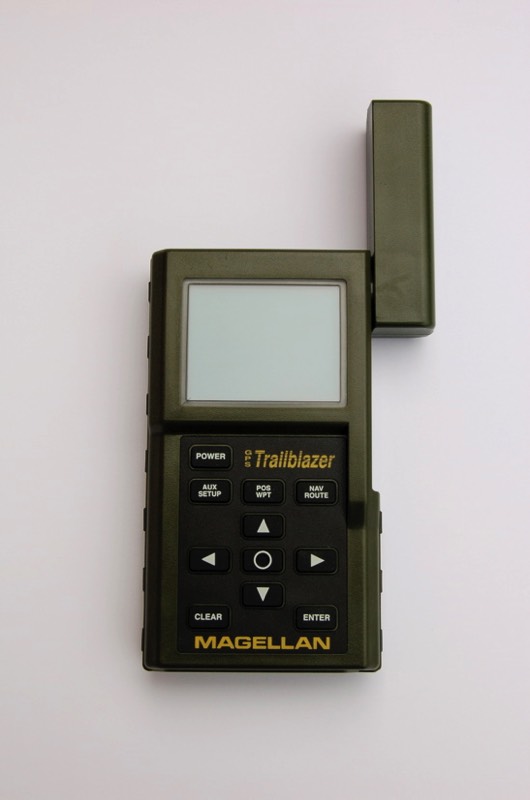
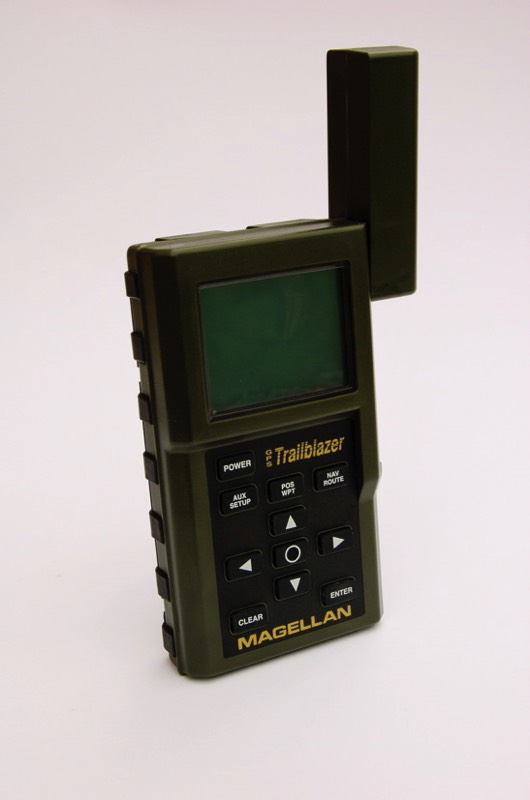
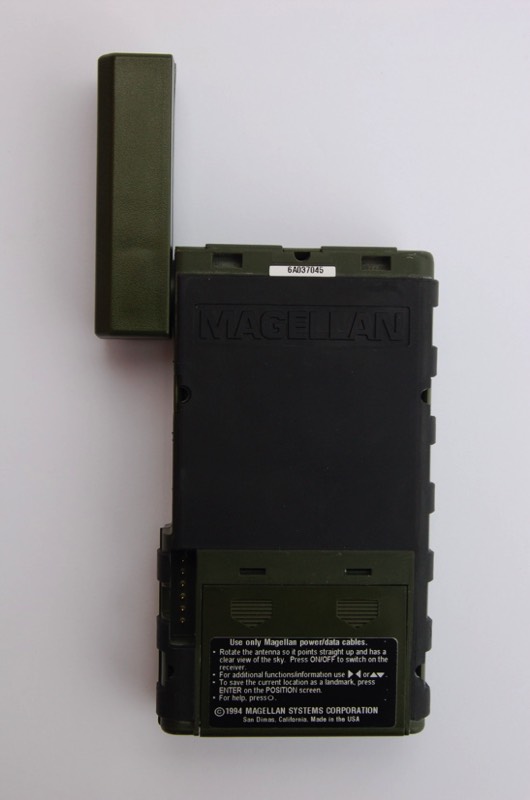
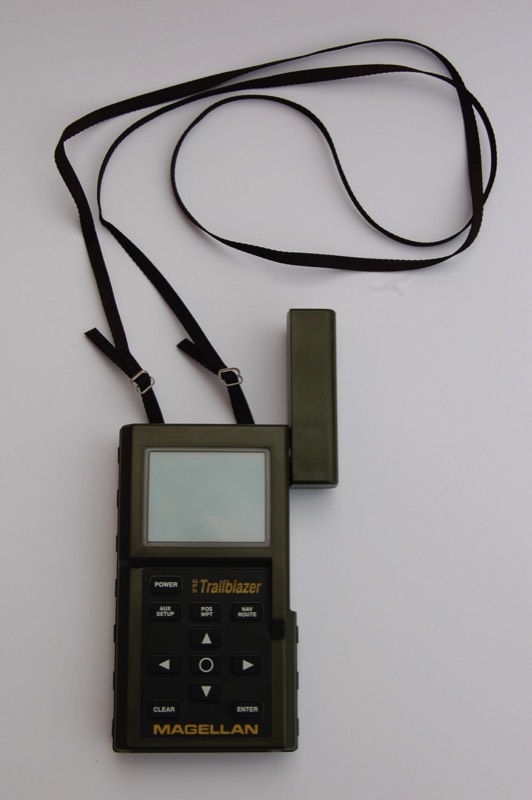
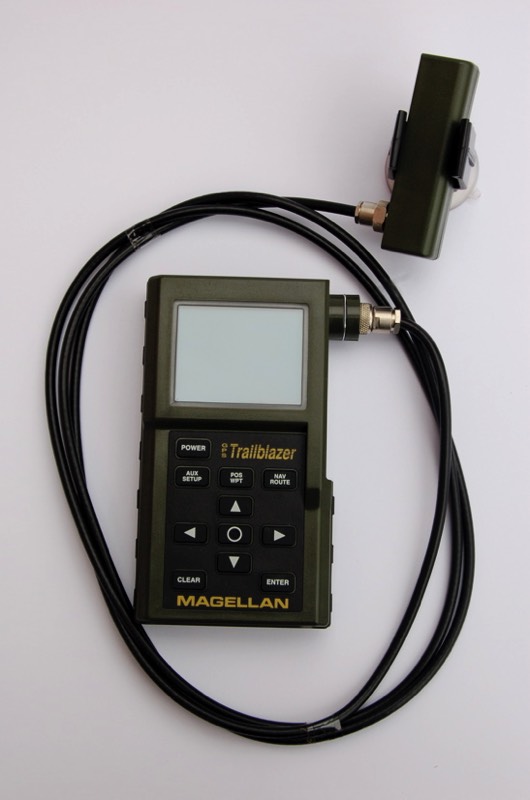

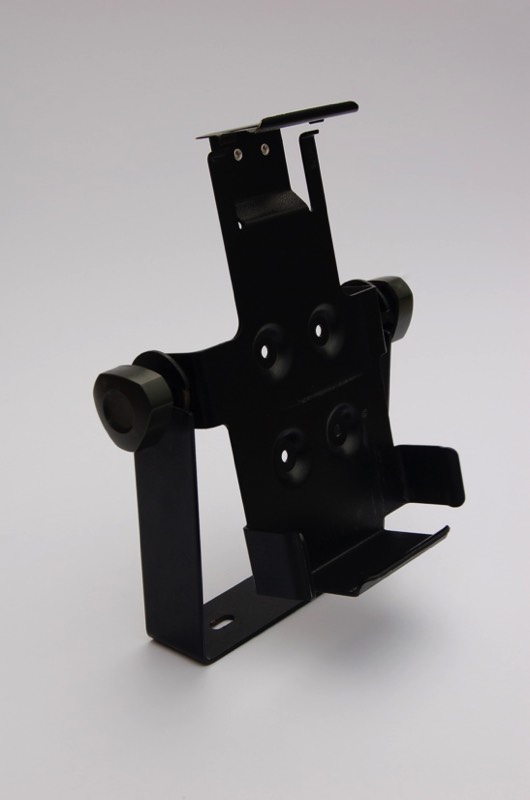
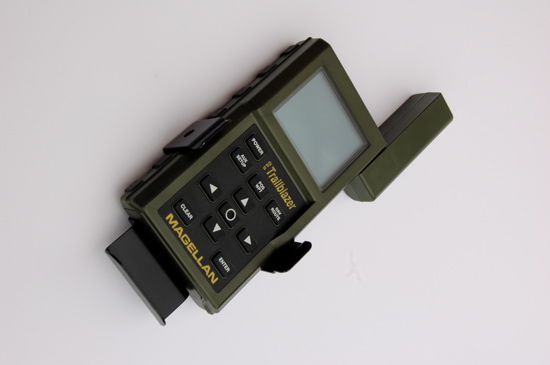
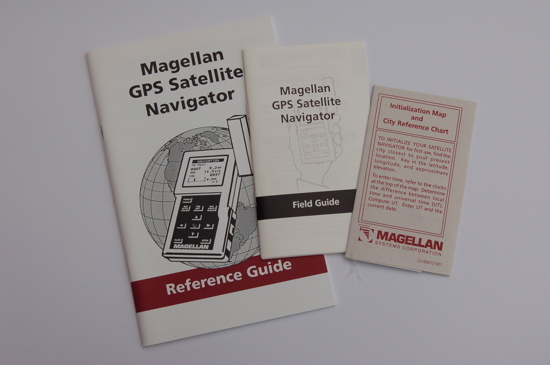
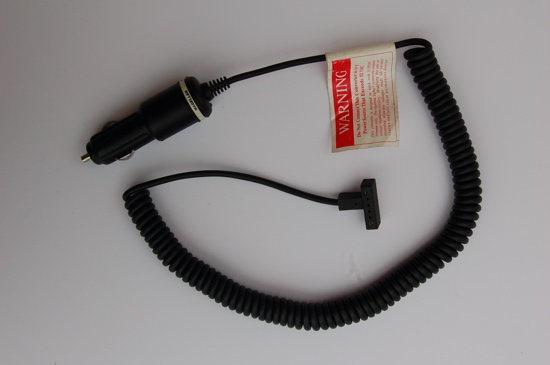
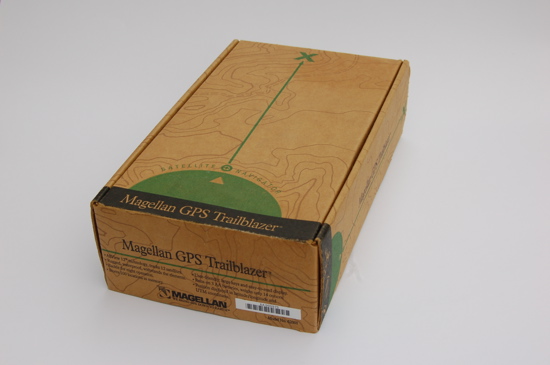
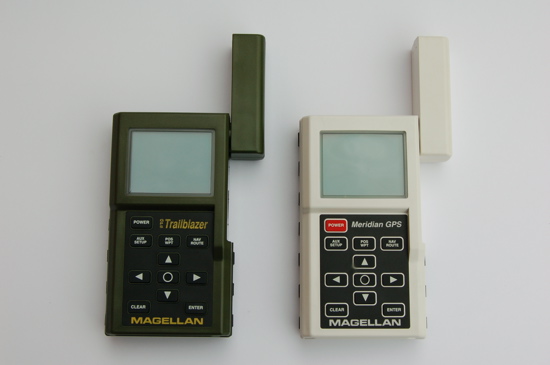
Initialization:
Connect to external power, do not enter initial position or time and wait 24 hours.
Features:
100 waypoints
1 route
2 data screens
1 pointer screen
data output
Dimensions: 155mm x 105mm x 32mm
Weight: 350g
Connect to external power, do not enter initial position or time and wait 24 hours.
Features:
100 waypoints
1 route
2 data screens
1 pointer screen
data output
Dimensions: 155mm x 105mm x 32mm
Weight: 350g